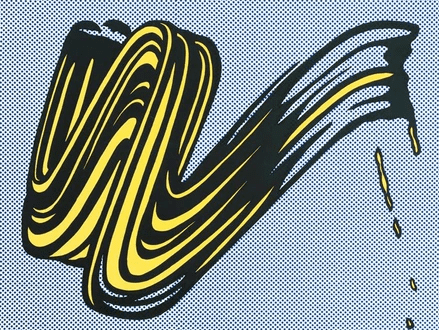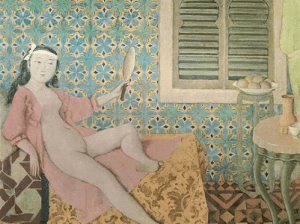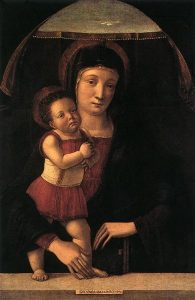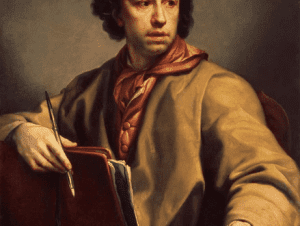Title of Artwork: “Brushstroke “

Artwork by Roy Lichtenstein
Year Created 1965
Summary of Brushstroke
In 1965, American Pop artist Roy Lichtenstein began a series of paintings known as Brushstroke, which he continued throughout the 1980s and 1990s. The aesthetic and style of popular imagery influenced Lichtenstein even after he abandoned the comic book motifs that made him famous in the first place. Brushstroke is still heavily influenced by comic books. For Brushstroke (1965), the initial inspiration came from a comic strip panel from the October 1964 issue of Strange Suspense Stories published by Charlton Comics. Dick Giordano’s graphic novel depicts the storey of a tortured artist and a painting that seems to take on a life of its own.
All About Brushstroke
For instance, in Woman with Flowered Hat (1963), based on Picasso’s Dora Maar with Cat (1941), and Non-Objective I (1964), inspired by Piet Mondrian, Lichtenstein began to look at art as a theme in the early 1960s. It is with this focus on the artist’s brushstroke in the Brushstrokes series that Lichtenstein returns to the theme of painting in a new way. Abstract Expressionism, a style of art that emerged in the United States following World War II, is satirised in Lichtenstein’s painting. Artwork by Jackson Pollock, Willem de Kooning, and Franz Kline are examples of abstract expressionists who painted with large brushes and broad gestural strokes in an attempt to capture the moment of creation. Pollock and de Kooning are both influenced by Brushstroke’s rhythmic drips and gestural, sweeping brushstrokes. Lichtenstein also credited Dutch Golden Age painter Frans Hals as a major inspiration. The loose and unblended brushstrokes of Hals, a favourite of the Abstract Expressionists, made him a well-known painter.
Painter Roy Lichtenstein simplified the original drawing while emphasising the brushstrokes. Through the use of diagonal slashes, black outline, and primary colours, the artist paid homage to the comic book’s visual style and aesthetic. In addition, he painted Ben-Day dots by hand, which were then used in the printing of low-cost books. The combination of “low” and “high” art, mass-produced commercial imagery and traditional easel painting continued in Lichtenstein’s work. In the painting, he used a popular mass-produced style to interpret a spontaneous brushstroke. “I’m tediously drawing something that looks like a brushstroke,” the artist explained, “taking something that was originally supposed to mean immediacy.” I want it to appear that it was done with great care. In other words, it’s an image of an image that has been misinterpreted. Painter’s spontaneous and personal gesture is depersonalised; it becomes a generic, mass-produced sign in the painting.
Throughout Lichtenstein’s career, the brushstroke was a recurring motif. His new interpretation of the motif began in the 1980s, with models, medium-sized and monumental sculptures. Other well-known examples are John Glenn Columbus International Airport (Columbus, OHBrushstrokes )’s in Flight (1984), Madrid’s Museo Reina Sofa (1996) Brushstroke, and the Parrish Museum’s Tokyo Brushwork I and II (1994) in Water Mill, NY.
Information Citations
En.wikipedia.org, https://en.wikipedia.org/.
Recommend0 recommendationsPublished in Artworks








Responses